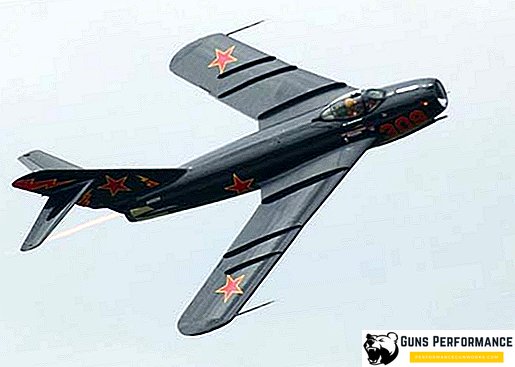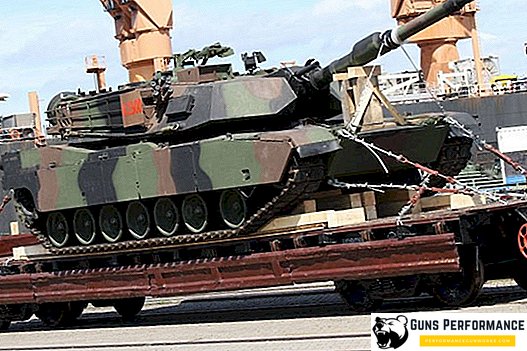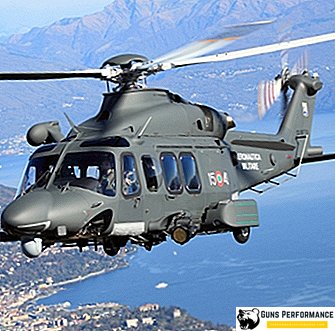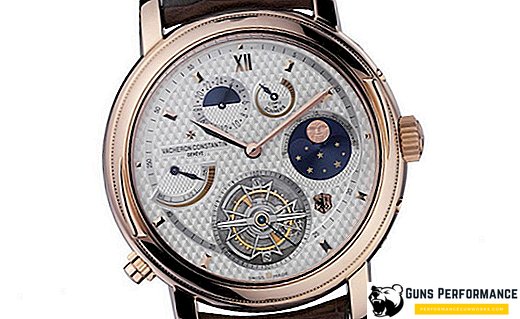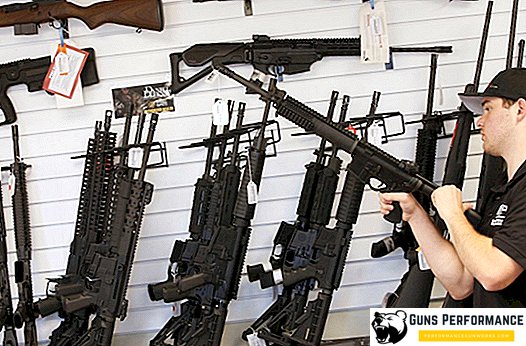The MAZ-537 is a legendary truck of the Soviet Union, it was assembled for several years in Minsk, and then before the project was closed - in Kurgan. In essence, this car is an advanced version of the MAZ-535: engineers were refining various components in order to improve technical performance.

general information
Designers placed in this car engine with 525 horsepower. The basis of the design was the spar frame. The wheelbase, compared with the 535th, has been increased. The change of engine forced engineers to amend the lubrication and cooling systems, change the fuel and air equipment. Under the cab cars put pre-heating system.
There are no fundamental changes in the transmission. The gear ratio of the overdrive transmission and flange sizes have been increased. To improve performance, it was not the design of assemblies that was changed, but the dimensions and reliability of components.
Some parts were made from other materials. The joints of suspension arms began to be made of bronze, which made it possible to improve their strength. This approach is bad on the other hand: for stable operation, more lubricant was required. The brake system underwent the most serious changes: the new mechanism worked better.

History of the 537th series
The first Kurgan transport was assembled in 1963. Then the assembly was carried out on the "Belarusian" technology from the parts received. The lack of necessary equipment and experience of mass production did not allow starting the production of the 537s on time, the start was given only in 1965. The first copies were a complete copy of the Minsk models. The same engine, transmission, brakes and suspension.
The cabin was all-metal and could hold four people. On the ceiling there is a hatch for additional ventilation of the cabin. At night, you can turn on the spotlight located on the roof. The driver can adjust his seat both vertically and horizontally. The standard version of the MAZ-537 tractor is a two-pair tractor. The model with three lanterns was made on request. Cargo transportation was carried out on trailers that can withstand 50-52 tons.
For 15 years, in technical terms, different versions of the 537th had slight differences. They boiled down to a rearrangement of structures, their modernization or complete elimination. It was possible to determine this or that modification by finishing the cabin. With each new model, it became easier. It had no effect on the operation.

First generation
The history has 6 versions with indices A, G, D, B, E, K. The first three were assembled in Minsk, the rest were developed at SKB-1, but production was carried out in Kurgan. Kurgan versions inherited from Minsk some features of appearance that you would not notice at first glance.
These include vertical air intakes, due to which additional air enters the engine compartment and cools the engine. Ventilation compartments through which air got into the cabin were located next to round headlights. Similar were the mirrors.

Second generation
In the 70s, the second generation appeared. The air intake became box-shaped; under it were simple slots. The road overview has been improved by increasing the rear view mirrors. The wings became flat and were extended to medium bridges. It was possible to reach the coupling and the winch by the stairs. Some specimens were equipped with experimental decorative elements, but they were not widely used.

Third generation
At the end of the 70s, the third generation of MAZ-537 tractor units appeared. Changes in the device were insignificant, but in terms of design the car became “severe” - it was deprived of all decorative elements. Some changes have affected the air intake and position.

Fourth generation
The fourth generation appeared in the 80s. The main difference was the lack of protective covers on the fuel tanks.
After saturating with this type of Soviet army, the machine was exported to friendly countries: Africa, Asia, the Middle East. For many years, the assembly of the car was released 8-10 thousand copies. Many of them continue to serve in our day.

The use of transport in the army
For the army of the Soviet Union made several major modifications MAZ-537.
"BUT"
Produced from 1964 to 1969. All-metal platform was shortened, carrying capacity was 15 thousand kilograms. The winch was located between the body and the engine compartment, could pull loads up to 15 tons.
The car was used at the airfields and in the missile forces. She easily transported airplanes on the runway, and also transported heavy ballistic missiles. With the help of a hydraulic push bar, the driver could help to move heavy vehicles.

"AT"
Produced from 1965 to 1985. The modification was a truck tractor that could carry an auto train weighing up to 62 tons. The maximum load on the coupling device has been reduced to 18 tons due to some structural changes. Seating device has been moved back. This change made it possible to transport goods with a non-standard hull shape.
With the help of this transport semitrailers were transported with rocket equipment for various divisions of rocket forces. There was also the opportunity to transport fuel tanks that could hold up to 30 thousand liters of fuel.

"G"
Produced from 1964 to 1969. This modification from Minsk was obtained in an unfinished form. Something in its design had to be changed, but there were no global innovations. The MAZ-537G was used for solving various strategic tasks.
With the help of it, armored vehicles weighing up to 68 tons were transported, and it was also possible to move as part of a road train weighing up to 91 tons. One more function became possible due to the use of a solid winch: you can load loads weighing up to 15 tons onto low-bed trailers.

Putting trucks into operation was problematic due to problems in the drawings received from Minsk. The first control tests revealed more than 100 shortcomings of varying degrees. After finalizing the design, the number of defects decreased by 30, but still remained significant. While the engineers were engaged in correcting the deficiencies, in Kurgan they began to assemble piece-by-piece tractor, as the Soviet Army urgently needed a similar technique.
From the third time this version managed to pass all tests, no flaws were revealed. As a result, the car became the most popular among our military: it was used to transport tracked armored vehicles on an asphalt road, ground and off-road. The appearance of the car made it possible to abandon the slow and strategically unreliable transportation of heavy equipment by trains.

"D"
Produced from 1965 to 1986. The main feature of the truck was the presence of an automatic electronic system that controlled the working and towing mechanisms. The maximum mass of the train was 88 tons. Behind the engine compartment, they installed a 75 kW generator.

"E"
Produced from 1966 to 1989. This model is a symbiosis of several versions. She was equipped with a cabin pushed back, but had the ability to transport trailers. A generator with a protective cover was also installed. He allowed to transfer energy to various semi-trailer control systems.
In the army, the car was used as a source of life support for missile systems and launch mechanisms. He also served as a towing vehicle, towing various armored vehicles. For a time could be the power source for other transport.

"TO"
Produced from 1965 to 1969. Used as a truck crane. The hydraulic crane could withstand loads of up to 16 tons, mounted on the back of the chassis. For stability during operation of the crane, four outriggers were used.
After the start of production, a number of flaws were identified, which did not allow the crane to become a common model. Its design had an extra weight, because of which the patency of the car was low. The main disadvantage was a high probability of lateral fall in the process. The only application of the model was the loading of charges on rocket launchers.

"T"
This model has received several prototypes. She planned to export to countries with hot climates and high humidity. For this, the body, the cabin and all the technical units were covered with insulating materials that were supposed to protect them from moisture. The total cost was high, so they refused from mass production.

MAZ-537: technical specifications
- The cabin accommodated four people and was in front of the engine;
- The engine had 12 cylinders and developed 525 horsepower;
- Maximum speed - 55 km / h;
- The transmission had 3 speeds;
- Length - 8.96 meters;
- Width - 2,885 meters;
- Height - 2.88 meters;
- Ground clearance - 50 centimeters;
- Weight - 21,600 kilograms;
- Two tanks of 420 liters.
The MAZ-537 has large wheels on cast wheels with a unique tread pattern, thanks to which it has a high maneuverability.

Conclusion
MAZ military tractor 537 - the legendary truck, which was a real breakthrough in engineering in the automotive industry of the USSR. Well-established production and high quality allowed him to become the main transport of the army.
The generals got a hands-on instrument that allows them to deploy armored vehicles in any place within a short time. This became possible due to the ability of the truck to move on public roads.
In the economic sphere, transport was rarely used and only by special instructions. That is why it is problematic to purchase it on the secondary market. There are rarely retired copies in which there are no many technical nodes. The truck is not rented.


